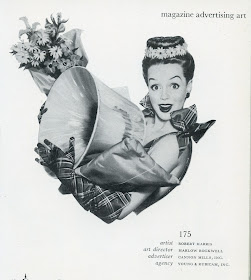They’re tearing down the house at 3 Tanglewood Lane in Westport Connecticut.
The house was built in 1920, when Westport was growing from a sleepy farm community to a village where artists, musicians and writers could live inexpensively and commute to New York City.
Westport quickly became a Mecca for American illustrators and over the years the house on Tanglewood Lane served as the home for one generation of illustrator after another-- illustrators such as Robert George Harris, Arpi Ermoyan and Bernie Fuchs.
The artists got married, raised kids, and worked far into the
night to meet deadlines. They struggled for artistic accomplishment as times and styles changed. In good times, the old house acquired a new studio or a swimming pool. Whether good times or bad, the ivy from the adjacent forest always nibbled away at the house, trying to reclaim it for nature. Eventually each illustrator moved on, passing the
house to the next generation.
Today illustrators are mostly gone from Westport. The last time I took a cab from the Westport train station, the cab driver cursed the "fucking yuppie bankers" who he said had invaded the town and were tearing down the gracious old homes to build modern mansions. Apparently investment bankers don't tip as well as illustrators.
All this week I’m going to tell you stories about the illustrators who lived at 3 Tanglewood Lane and the art they produced.
All this week I’m going to tell you stories about the illustrators who lived at 3 Tanglewood Lane and the art they produced.
Robert George Harris rode his motorcycle from Kansas all the way to New York to seek his fortune as an illustrator. In 1935 he married Marjorie
Elenora King and they moved to the house in the woods on Tanglewood Lane to raise a family.
Harris started out painting lurid pulp magazine covers on the outskirts of respectability:
Harris started out painting lurid pulp magazine covers on the outskirts of respectability:
But gradually, his work became more refined and genteel. So did the illustration field. So did Westport. The "slicks" (high class magazines printed on coated paper) were having their heyday. Harris began working for McCall’s, The Saturday Evening Post, The Ladies' Home Journal, and Redbook.
He also began doing lucrative advertising work. He developed a trademark of pretty girls with impossibly high eyebrows.
As he prospered, Harris was able to build a high ceilinged studio over the garage with great big windows for plenty of light.
By the 1950s, Harris had gone from painting gunfights for Wild West Weekly to painting cute domestic scenes using his own kitchen in the house on Tanglewood Lane for the backgrounds.
By 1953, his children were older and Harris was ready to move on. He sold the house to a power couple of American illustration, Arpi and Suren Ermoyan. We'll talk about them next.
He also began doing lucrative advertising work. He developed a trademark of pretty girls with impossibly high eyebrows.
As he prospered, Harris was able to build a high ceilinged studio over the garage with great big windows for plenty of light.
By the 1950s, Harris had gone from painting gunfights for Wild West Weekly to painting cute domestic scenes using his own kitchen in the house on Tanglewood Lane for the backgrounds.










Fucking yuppie bankers.
ReplyDeleteThis comment has been removed by the author.
ReplyDeleteThis is a wonderful little idea David, and I look forward to the next instalment. It has put me in mind, in a very convoluted way, of a sign that was above the bar in a pub frequented by art students from the Slade. Bill Coldstream, a famous art tutor there, was infuriated by the sign which read; "an artist is not a special kind of man but every man is a special kind of artist". Bill turned to his friend and said; 'They might as well put "a pub is not a special kind of house, but every house is a special kind of pub."'
ReplyDeleteMORAN-- Yes, there does seem to be some support for that view, at least amongst cab drivers in Westport.
ReplyDeleteChris Bennett-- Thanks, Chris. You make me think I should be writing this about the bars in Westport, rather than about this house. There were a couple of bars across from the train station where many illustrators would stop to drink when they got done drinking on the commuter train from New York (which I understand had a bar car in the old days). There was a lot of great memorabilia there, but the old ones have closed down.